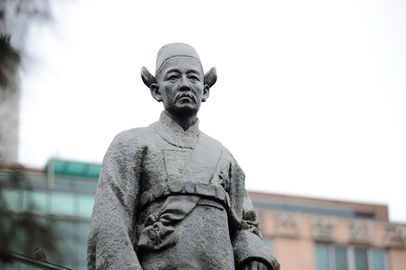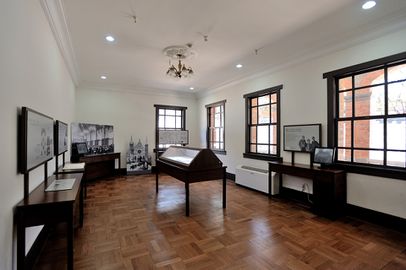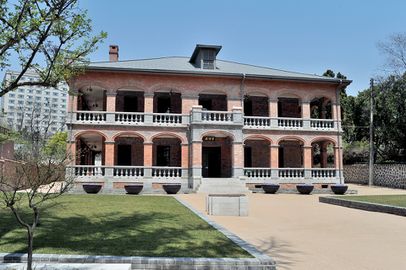"Koreans' Resistance to Japanese Imperialism"의 두 판 사이의 차이
(→Koreans' Resistance to Japanese Imperialism) |
|||
| 7번째 줄: | 7번째 줄: | ||
On November 17, 1905, Japan pressured [[Emperor Gojong]] and his cabinet to sign a protectorate treaty. [[Emperor Gojong|Gojong]] refused but five ministers ended up signing the agreement. Koreans call this the [[Eulsa Treaty|''Eulsa Neugyak'' (乙巳勒約)]], which means "Coerced Treaty of 1905." The five signers of the treaty are known as the "[[five traitors of 1905]]." The treaty robbed Korea of its sovereignty, reducing it to a protectorate of Japan. [[Ito Hirobumi]] was installed as the first Japanese Resident-General. | On November 17, 1905, Japan pressured [[Emperor Gojong]] and his cabinet to sign a protectorate treaty. [[Emperor Gojong|Gojong]] refused but five ministers ended up signing the agreement. Koreans call this the [[Eulsa Treaty|''Eulsa Neugyak'' (乙巳勒約)]], which means "Coerced Treaty of 1905." The five signers of the treaty are known as the "[[five traitors of 1905]]." The treaty robbed Korea of its sovereignty, reducing it to a protectorate of Japan. [[Ito Hirobumi]] was installed as the first Japanese Resident-General. | ||
| − | <gallery mode=packed heights= | + | <gallery mode=packed heights=180px> |
파일:2-10.민영환-FSC 5832.jpg|을사조약 후 자결한 충정공 민영환 동상(서울 종로구 우정국로) | 파일:2-10.민영환-FSC 5832.jpg|을사조약 후 자결한 충정공 민영환 동상(서울 종로구 우정국로) | ||
파일:2-10.중명전 내부-DSC 5341.jpg|헤이그에 밀사를 파견했던 중명전 내부(서울 중구 정동길) | 파일:2-10.중명전 내부-DSC 5341.jpg|헤이그에 밀사를 파견했던 중명전 내부(서울 중구 정동길) | ||
2017년 11월 19일 (일) 21:40 판
Koreans' Resistance to Japanese Imperialism
After the secret Taft–Katsura Agreement of 1905 and the Treaty of Portsmouth, which ended the Russo-Japanese war and recognized Japan's rights over Korea, Japan sent Ito Hirobumi (伊藤博文, 1841-1909) to Korea in a move to make the country a Japanese protectorate.
On November 17, 1905, Japan pressured Emperor Gojong and his cabinet to sign a protectorate treaty. Gojong refused but five ministers ended up signing the agreement. Koreans call this the Eulsa Neugyak (乙巳勒約), which means "Coerced Treaty of 1905." The five signers of the treaty are known as the "five traitors of 1905." The treaty robbed Korea of its sovereignty, reducing it to a protectorate of Japan. Ito Hirobumi was installed as the first Japanese Resident-General.
Koreans began to protest, questioning the legality of the treaty, and a group was formed to assassinate the five traitors. Yi Wan-yong was stabbed, though he did not die. Four days after the protectorate treaty was signed, Gojong sent Homer Hulbert as his emissary to the United States to proclaim that the treaty had been signed under force and was therefore null and void. In 1907, he sent secret emissaries to the Hague Peace Conference in to announce that the treaty was invalid. The foreign powers sided with Japan, however, and Gojong was forced to step down in favor of his son Sunjong.
Protests inside Korea continued with groups of resistance fighters called "righteous armies" rising up around the country, bringing together soldiers, Confucian scholars, farmers and merchants. Over 1,000 battles were waged between 1908 and 1909, and in the process the Japanese massacred and imprisoned thousands of people.
In October 1909, An Jung-geun (안중근, 安重根, 1879-1910), a resistance army leader, assassinated Hirobumi at Harbin Station in China, laying 15 charges against him. An was executed by Japan in March 1910 and in August the same year Japan forced Korea to sign an annexation treaty, making Korea a colony of the Japanese Empire. Emperor Sunjong refused to sign the treaty, and it was done by Prime Minister Yi Wan-yong, who did not have authority to sign any treaty as Head of State status.
Both the Eulsa Treaty and the Annexation Treaty are considered invalid as they were signed under force and by illegitimate signers on the Korean side, and carried out without proper basic procedures between the two countries.
References


